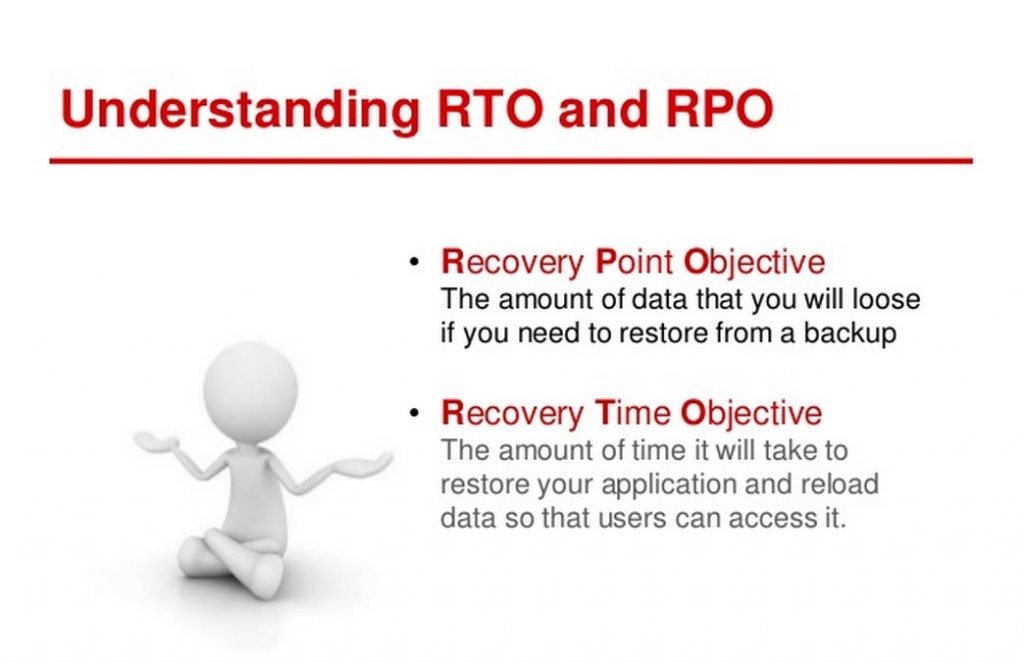All businesses should have in place a disaster recovery plan for use in the event of something going wrong with their systems so that they can get up and running once again as quickly as possible. Two terms commonly used are RTO and RPO and both are terms you should familiarize yourself with to understand disaster recovery.

RTO and RPO
RTO stands for recovery time objective, which is the duration of time in which a business must restore normal system recovery to avoid consequences that can not only break business continuity but also cause financial loss.
RPO stands for recovery point objective, which is the time that a disruption occurs before the maximum acceptable data loss that can be tolerated is reached. This means data loss to the point where disruption can be caused to the general running of the business.
If you have a copy of data before an outage from yesterday and have an RPO set below this time, then you will still be within the parameters where recovery is a tolerable option.
A traditional type of backup onto tape could take a few hours so you will need to bear in mind the time when you duplicate data to create a recovery point.
Having continued replication as is the case with the cloud is a great option, as it means that there is no time spent copying data as it is done automatically so a closer restore point is available avoiding major data loss.
Having RTO online registration is extremely important to avoid major data loss. You can set the parameters of what you deem to be acceptable data loss so that copies of data are made frequently to avoid major problems, such as potential customers being unable to make transactions or have access to your site.
RTO online registration ensures that data is copied at specific times so that should a disaster occur you won’t have delays that cost your business time and money. It’s extremely important to have an action plan in place even if you have not experienced issues in the past to ensure you can provide your customers with a continual service.
Not doing so could damage the reputation of your company and not only lose current customers but also miss the opportunity to gain new ones.
